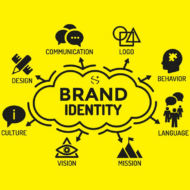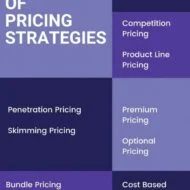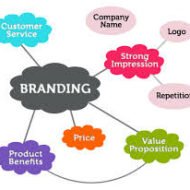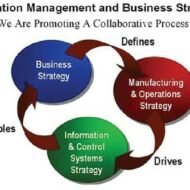Posted by Managementguru in How To, Intellectual Property Rights, Marketing, Sales, Strategy
on Apr 3rd, 2015 | 0 comments

What is Brand Identity? Definitions Business Dictionary: The visible elements of a brand (such as colors, design, logotype, name, symbol) that together identify and distinguish the brand in the consumers’ mind. Investopedia: How a business wants a brand’s name, communication style, logo and other visual elements to be perceived by consumers. Kapferer’s Brand Identity Prism Model: The brand identity prism by Kapferer describes the brand through six different facets. The identity of a brand describes what makes it stand out and special, as well as the attractiveness of the brand. By the brand’s physique the physical appearance is meant. This includes a prototype of the brand: the product that represents the brand’s qualities.The brand personality connects the brand with human characteristics to differentiate. It is the way a brand speaks to its customers.Every brand tries to build a relationship with its customers. This relationship is more obvious for service brands, but product brands like Porsche and Morgan build relationships with their clients The question here is what role does the brand occupy in the relationship. It could be being a friend or being dominant.The culture of the company is reflected by the values the brand is communicating. Values can be linked for example to the origin of the company and their heritage.The reflection of a brand can be seen as the typical user of the product it is the outward mirror of the brand. It therefore often gets confused with the target market.The self-image is the way customers see themselves when using the brand and how this makes them feel. (Kapferer, 2012) Pic Courtesy: Marketing91 What are the top 3 things that make customers loyal to a brand? Quality – Quality in business, engineering and manufacturing has a pragmatic interpretation as the non-inferiority or superiority of something; it is also defined as fitness for purpose. Quality is a perceptual, conditional, and somewhat subjective attribute and may be understood differently by different people. Customer Service – The process of ensuring customer satisfaction with a product or service. Often, customer service takes place while performing a transaction for the customer, such as making a sale or returning an item. Customer service can take the form of an in-person interaction, a phone call, self-service systems, or by other means. Price – For many consumers, price is a very important attribute. The attribute price can indeed be more important on decision making than that of quality, brand name and others. We can conclude that consumer consideration to decide product brand is mainly based on price. The main question is how consumer brand decision is effected by price fluctuations. Does consumer move to another brand as price rises? Branding Gone Bad : Pizza Hut Tries to Lose the Pizza For some bizarre reason, Pizza Hut made an attempt to rebrand in 2009 by calling themselves “The Hut.” As a result, the fast food chain received a significant amount of ridicule from the public, and had to revert back to the original name. Although the company may deny rumors regarding the name change, photographic evidence of the redesigned logo are still circulating online. When British Airways Removed the Union Jack In 1997, British Airways executive Bob Ayling stated, “Perhaps we need to lose some of our old-fashioned Britishness and take on board some of the new British traits.” The company then embarked on a project that saw the Union Jack tail fin flag being replaced with other designs. After receiving numerous complaints from customers, this decision was reversed in 2001 when Ayling was replaced by Rod Eddington, and the Union Jack was once again painted on the fleet’s tail fins. Source: Six Examples of Branding Gone Wrong How Important is Brand...

Posted by Managementguru in Business Management, Marketing, Principles of Management
on Mar 4th, 2014 | 0 comments

Price Discrimination is nothing but a pricing strategy that charges customers different prices for the same product or service. Price discrimination is adopted by most of the firms in order to group their customers into different segments and fix different prices for each segment for identical products and services. This helps them to increase their revenue as well to cater to the needs of different customer groups. The negative aspect of this exercise is increased administrative costs in segmenting the markets and some people end up paying higher costs. But it has to be remembered that by discriminating prices, firms are able to cut through and exploit all layers of the market, helping them to expand. Elasticity of Demand Price discrimination can be practiced by a firm only which has some control over the price. Backgroung Image Source: Image by Gerd Altmann from Pixabay Obviously a price taker cannot indulge himself in price discrimination. It must be possible to group different markets in terms of price elasticity of demand. Suppose a firm identifies two potential markets, fixes high price for one market and low for another, caution is the key word in that, both the markets should be separable. Otherwise there is the danger of purchasing a product in one market for a lower price and the same being resold in another at a higher price. It might damage the market reputation of the firm as well. Skimming the Profit The process of price discrimination is followed by most of the firms existing in monopolistic and oligopolistic markets, where there is a necessity to exploit potential customers at the earliest in order to skim the profit. Premium customers are targeted first, followed by middle income group and then lower income group. Recent marketing strategies allow middle and lower income group to enjoy all the material comforts and luxuries available for the premium class, by arranging for loans to be settled in equated monthly installments over a period of time. The firms are also engaged in associating themselves with financial institutions and banks, which proves to be a win-win situation for both. Following are some examples cited for your understanding about price discrimination: In legal and medical professions, charging of lower fees to the low income than to high income group.Charging of lower prices abroad than at home for a variety of products and services ranging from books and medicines to movies.Charging of lower prices for elders and children in public transportation and airlines.Charging of lower hotel rates for conventions and meetings.Electronic industry, where the price set initially is high and then it falls down gradually. Firms believe that by offering different prices to different customer groups, can retain the customers and prevent them from switching over to another supplier. Travel agencies offer fanciful package tours with attractive and competent prices that are irresistible. Such is the power of marketing when presented in the right mix targeting the right customers at the right...

Posted by Managementguru in Business Management, Marketing, Principles of Management
on Mar 4th, 2014 | 0 comments

Trends in Consumer Marketing FMCG’s: Consumer marketing is defined as creating and selling products, goods and services to individual buyers, as opposed to trying to appeal to businesses. You would have often heard about this – Fast moving consumer goods. These are nothing but products that are destined for use by ultimate customers or households that cannot be done with, as their usage is on a day to day basis. It might make some sense if I cite some examples – toothpaste, soaps, shaving creams, talcs, body lotions; these are meant for personal consumption and the demand for such products is direct and needs less of relationship marketing. Brand Focus: The number of customers in the consumer market is relatively large and the product purchase is influenced by even emotional factors. The focus is on the brand name and some people ardently follow a particular brand for ages, and this might be attributed to the effect that has been created by mass media advertising, or it might be due to the fact that they might identify themselves in some or the other with the product. It becomes a personal companion over a period of time. Impulse Buying: The decision making process is informal and often simple. Sometimes, it is influenced by the budget equations and feasibility. Impulse buying is also common in consumer market. At times, the consumers go adventurous and like to try their hands on new products. Branding is an important feature that retains the customer base for business firms and that’s why market analysts are attaching so much of significance to advertisements and sales promotions, to make their product a household name. Distribution Network: The firms must have a pucca distribution network linking different parts of the territories, where they want to expand their market. Say, for instance, a soft drink can be made popular by branding, but if there is no sufficient supply in the market, how do you expect customers to support your product? Equally important is providing the customers with a product size that best suits their budget. Consumer Marketing Infographic: Researchomatic.com Market Segmentation: Market segmentation recognizes the existence of distinct market groups, each with a distinct set of needs. Through segmentation, the firm directs its product and promotional efforts towards those markets that will benefit most from or will get the greatest enjoyment from its merchandise. Over the years, segmentation has become a popular strategic technique as the market is ever flushed with competitors. Influence of Price: A number of sellers are seen in this kind of consumer market and it is only the market that decides the price and not the participants. The marketers have nothing to lose if they sell at the market price, but if they plan to sell at slightly higher price levels than that of the market, it will prove detrimental to their objective. https://www.businessmodelscholar.com/wp-content/uploads/2020/06/3.pdf They are only price takers and not price makers. But they have the leverage to freely enter and exit the market. If the consumers foresee a fall in the general price levels of a product, they wait for some more time to take full advantage of the situation and decide to postpone the purchase. If the market shows an increasing price trend, it is the other way round, either they buy in bulk or go for substitutes.Say, if the price levels of coffee is on the rise, people opt for tea. Demand for consumer goods is price elastic. Consumers don’t care for much technical specifications; they only care for the quality backed up by a strong brand name. Post by Free MBA...

Posted by Managementguru in Business Management, Marketing, Principles of Management
on Mar 3rd, 2014 | 0 comments

Customer Centric or Product Centric Customer centric: refers to the orientation of a company to the needs and behaviors of its customers. Product centric: refers to the orientation of a company towards manufacturing and improving the product line. All products that enter the market are not given the kind of welcome which only certain products are able to enjoy. Why is that only few products are top notch and others average performers? The answer is very simple, you need to be customer centric rather focusing on improving your product and its range. What is the fun in making products that go bland over a period of time? Creating an appealing product does not suffice the requirements of the consumers. Understanding the consumer, his needs and preferences makes you a good marketer. “What people want to buy and what you want people to buy are entirely two different entities.” Customer Wanton and Preferences Marketing is a concept that talks about creating a favorable environment or identifying a niche where you can sell your products comfortably or where the products can sell themselves provided the focus is on the target customer. What companies do now in the name of marketing is nothing but product promotion that exhausts huge chunk of money from the management’s treasury. Business schools have a great role to play in idealizing these concepts for the better understanding of management graduates, make them deliver the right choice of action in real time environment. Marketing starts right from developing a prospective business idea into a concrete business plan followed by branding and promotions. But the product base has to be built upon customer wanton and preferences. Indigenous Products The soft drink “Bovonto” is very popular and a preferred drink in south of Tamilnadu, India and the manufacturers have their plants at various places in Tamilnadu. Although not a big name in the international market, it is a direct competitor for Coke and Pepsi in the southern regions of Tamilnadu. The grape vine is that the product is a perfect “market fit”. To our amusement and amazement the product has communicated well with the market place through taste and quality. Here is the unerring message, ‘Let the product speak for itself’. Indigenous products always gain instant recognition as they connect well with the local people emotionally. If people of each and every country vows only to buy indigenous products, many MNC’s would be out of business and filing for bankruptcy. Such is the power of the market and people who are the owners of the market. What is that ‘X’ factor that makes your product different and unique Let’s look at it from another perspective. Incidentally you happen to develop a great product and you want to market the product. This situation calls for patenting the product and again it can be made market centric by finding the right market segment for the product and promoting it in such a way that the product content appeals to the market. Tell the masses how your product can solve specific problems through its unique content. What is that ‘X’ factor that makes your product different and unique as well is what you have to communicate to the people whom you are targeting. Facebook has revolutionized the internet marketplace by offering simple and user friendly interface and a sophisticated niche for each and every individual who wants to make his/ her presence felt. A good business plan is one which incorporates the best of ideas from all spheres of the company, as marketing is not a separate entity and promotions call for huge investments. Many companies fail to understand the basis of market success which...

Posted by Managementguru in Business Management, Operations Management, Principles of Management
on Feb 24th, 2014 | 0 comments

The management of conversion or transformation process which accepts inputs and delivers usable goods and services is what is called “operations management.” The inputs may be in the form of, capital, material, labor, technology, information, machines etc. The process takes place in an effective and efficient manner through operations planning, design, management and control. Don’t forget to download the 3 page Project Planner Printable at the end of this post 👇🏻 Absolutely Free Earlier it was called, production or manufacturing management. Since operation is a general term in a productive environment whose output may be goods or services, the term operations management has become more appropriate. The Aim of a Good Operational Management Would be High level of productivityCompetitive cost and qualityTimely deliveryProducing goods as per the requirements of the consumer, that is customer oriented.Flexibility and responsiveness in the production of goods and services Production or operation in the three important sectors of an economy, namely, agriculture, industry and service, creates national wealth and serves as an index for the growth of that economy. One has to understand the link between operations management and other functional areas to appreciate its scope. The goals of the operations strategy has to necessarily be in tandem with the overall corporate strategy to accomplish the goals of a firm. Scope of Operations Management From marketing department, cues regarding customer preference and market segmentation in terms of product, price and volume are supplied to the production department, based on which the production planning is concluded. From Research and development comes the product design and process technology. Human resource is an integral part of production process and also a crucial input. Man power planning by the human resource department plays a major role in recruiting, selecting, training, evaluating and empowering labor force. Operations Strategy The great diversity in products and services available in the market should be taken into consideration before deciding on your operations strategy. At one end we have custom made products that are designed and manufactured to suit the specific needs of the consumers. For instance, custom made shoes, shirts, suits, furniture etc. Here the emphasis is on quality and delivery where the customer is not very much bothered about the price. At the other end manufacturers go for highly standardized products that are available “off the shelf.” Say, home appliances, detergents, soaps etc., here the product differentiation is very minimal and the focus is on competitive pricing as the material is available in plenty. Economy of Scale A customized product would require a manufacturing set up that can handle a wide variety of general products. The sequence of operations for each product would vary in the manufacturing system making a customized product. So, a process oriented manufacturing system is designed, where similar facilities doing similar operations are grouped together and departmentalized. Standardized products go for a product focused manufacturing system, to reduce the “through put” time as large volumes are required. To be cost effective, each product should have a dedicated line of production to take advantage of the “economy of scale.” Intermediate types of products also find their place in the market and they are produced in a production layout that has a mix of product and process orientation. Here a whole range of products and services are created for the benefit of the customers. In a long term basis, manufacturers should aim to develop new technology, environmentally viable products, increase R and D activity, update skills of work force and managers and focus on development of new products, process and innovations....










